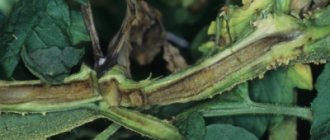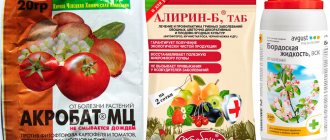Poultry farming » Chickens
0
5082
Article rating
Kira Stoletova
Today, many people keep chickens in their backyard - this activity brings a good profit. But the success of this business depends on the experience of the owner, because it is necessary to quickly respond to emerging problems and diseases of the legs of chickens. First of all, you should learn to notice symptoms in a timely manner, and for this, the habit of examining the inhabitants of your yard every day is important. Many broilers have leg diseases.
Leg diseases in chickens
It only takes a little observation of the birds to realize that one of the chickens has a problem with their legs. Sometimes a chicken stands on one leg, but few people react to such a symptom, but in vain. This behavior indicates a violation of the condition. Among chicken leg diseases, the first place is occupied by lameness and the so-called calcareous leg. The feathered inhabitants of the yard may have paralysis, crooked and curly fingers.
If among the chickens you notice an individual that is limping, falls on its foot, has difficulty moving, or the chicken does not stand on its feet, then it is urgent to immediately isolate it and examine it very carefully. And the sooner you separate the sick bird from the rest, the better it will be for it - among its relatives it will only get worse: they will beat it, not allow it to eat, which will only worsen its condition.
Lameness in poultry
What is the cause of chicken lameness and its symptoms? Most often, if a chicken is limping, this is the main symptom of some illness or injury. A chicken can receive mechanical injuries such as cuts to the feet or fingers, for example from glass fragments; the bird can sprain ligaments, dislocate, bruise a leg, or damage muscles. Lameness can also be a consequence of dietary deficiency. Broilers can suffer from lameness due to the fact that they are growing rapidly and gaining weight. Lameness can also appear in birds that have growths or spurs. They appear mainly in adults and can develop due to poor-quality flooring. In any case, the spur or growths must be removed.
A chicken can also begin to limp because it develops a disease of its internal organs, namely the kidneys. This symptom of kidney disease becomes quite understandable if we take into account that it is through this organ that the nerves that are “responsible” for the activity of chicken legs pass.
The symptom may gradually increase in severity, from a barely noticeable limp to a deep lameness, affecting one or both legs at once. The appearance of the joint changes - it swells, becomes larger, and takes on an unnatural position. The hen may also limp because her legs are shaking. After running a short distance, the legs may “break” or the hen may not be able to stand for long and has difficulty getting up on her feet.
Treatment of lameness in chickens
First of all, you should examine the chicken’s legs to see if there are any mechanical damages. Sometimes it happens as a result of a fall from a perch, the chicken lies on its side, the legs swell, this occurs due to injury. It also happens that a bird accidentally gets entangled in some rope, fishing line, or wire. If it is not released in time, such fetters can cause great harm to the chicken. If you are convinced that the cause of lameness is only an injury, then you need to treat according to the minimum plan.
First, you need to carry out isolation from other individuals (but since these are gregarious birds, it is better for the sick laying hen to see her relatives through a net), complete food enriched with vitamins, and treatment of existing injuries or scratches. For cuts and punctures, use hydrogen peroxide, iodine or brilliant green. If the limping individual has no visible injuries, then it is worth showing it to the veterinarian.
Prevention of lameness
The bones, joints and ligaments on the legs of chickens are not strong enough, so there is no need to catch them by the legs - this can easily cause injury, even a fracture. Try to place the perches so that the birds have easy access to the perch - without obstacles that could damage them if they fly down. Of course, you need to ensure that no sharp objects get into the herd’s habitat and monitor cleanliness.
When is it necessary to contact a veterinarian?
Sometimes you can eliminate the problem yourself, however, some cases of chickens falling on their feet require urgent intervention from a specialist.
Let's find out what these cases are:
- if the chicken flatly refuses to eat, even if it has not eaten for a long time;
- if he practically doesn’t get up at all;
- if the bird's feathers are ruffled;
- if you were unable to independently determine the reason why your legs failed.
Until the veterinarian determines the cause of the bird's illness, it must be placed in a separate cage. They should also be released for walking separately from other animals. It is important to feed the bird fully and include vitamin supplements in its menu.
So, we found out why a chicken falls on its legs and how to stop this problem. There can be quite a few reasons: it is important to determine the correct one yourself or with the help of a veterinarian, and treat the bird based on this.
Arthritis and tenosynovitis
Arthritis is the process of inflammation of the joint capsules and tissues adjacent to them. Broilers are most susceptible to arthritis. Tenosynovitis is an inflammation of the tendons. This disease is more common in older individuals. This disease is not uncommon in roosters. These diseases can arise for various reasons - both mechanical in nature and due to the entry of a pathogen (bacteria, virus).
But still, this is more of a disease of dirty feet. In broiler chickens, the disease can be a consequence of improper maintenance: large crowding of birds, untimely replacement of litter, unbalanced feed. A bird with this disease not only cannot walk, but even sitting on a perch causes her pain. The first thing to do is to improve the living conditions of the birds.
Symptoms of arthritis and tenosynovitis
- The bird gets up heavily.
- Lameness of a chicken, both legs gave out
- There may be growths on the paws.
- The joint appears enlarged and feels hot if touched.
- The chicken sits in one place all the time.
Treatment
At home, you cannot do without antibiotics and antiviral agents. The following drugs will be needed: ampicillin, sulfadimethoxine, polymyxin M. One of these drugs is given to infected individuals along with food for 5 days. The dosage and the drug itself are prescribed exclusively by a veterinarian, taking into account the characteristics of your chicken and the stage of the disease.
It is also necessary to tidy up the room where the individuals are kept. The main thing is cleanliness and dryness in the chicken coop. And to prevent food and dirt from sticking to their paws and causing growths on them, you can place feeders into which the chickens will not be able to climb with their paws. The second is to strengthen the chickens’ immunity, for which vitamins and microelements need to be added to the feed.
Plantar pododermatitis (corns, swellings, injuries)
Symptoms:
- there are hard growths in the form of calluses on the soles of the paws;
- cracks with ichor discharge;
- upon palpation, a hard rod is felt inside the paw pad;
- chickens are inactive, shifting from foot to foot;
- decreased appetite.
- Plantar pododermatitis
- Drugs for treatment: antibiotics (ampicillin), trivitamin, tetracycline ointment, synthomycin ointment, vitamin A, fish oil, surgical intervention if necessary.
- The disease is non-fatal for birds.
Crooked toes
Chickens can get this disease during the first month of their life. It is necessary to distinguish between two types of disease: crooked toes, when the individual walks with its paws tucked to the side, and curly paws, which somehow bend down, which makes the bird walk “on tiptoe.” The symptom of crooked toes is completely obvious: when moving, an individual relies only on the side surface of its paws or on one limb.
The disease occurs due to mechanical trauma, cold floors in the chicken coop, mesh floors, and also due to violations of the rules of the incubation period. Heredity can also play a role. Therefore, in such cases, when there are no obvious reasons for the bird’s crooked fingers, it is not worth leaving it for breeding. You can see the curvature of fingers in poultry in more detail in a photo or video.
Treatment
It is already too late to treat such a disease if the individual has grown up. It is appropriate to talk only about prevention. And for chickens you need to create the right living conditions. In the case of a genetic cause of the disease, a different tribe is needed. During incubation, strict compliance with all conditions is required. And under no circumstances should chickens be kept on a cold floor or on a mesh floor.
Rickets
A lack of vitamin D3 affects the chicken’s body as a whole. But the most noticeable symptom to the human eye will be bowed legs. Adult chickens lay soft-shelled eggs. They limp and can easily break bones due to their softness; their beak is flexible, as are their claws.
Broiler chickens with rickets, when they are more than a week old, walk on their hocks, become emaciated, and are delayed in development. If no measures are taken, the bird completely loses strength and dies.
They are treated with ultraviolet irradiation (natural or artificial) and increasing the dose of vitamin D (but not more than 2-3 times). It should be determined by your local veterinarian as it varies by region.
Bird's curly toes
In essence, this is developing paralysis of the legs. The individual walks on the tips of its toes, curved downwards. She can't straighten them. The same thing as a bird losing its legs. The disease is acquired by a bird in the first few weeks of life. Usually this is caused by food that does not have enough riboflavin and the result is that the paws are taken away. Chickens with this disease die quickly. And the surviving chicks do not grow well, so there is no point in keeping them any longer. There is only one symptom - the bird walks with difficulty, standing on its toes.
Treatment
In the initial stages, even if the manifestation is mild, multivitamins with riboflavin should be given in high doses. But if the disease is advanced, nothing can be fixed. It is necessary to change the breeding bird if chicks hatch with congenital characteristics. The young brood should be fed with balanced food. In winter, include more greens and vitamins in your chickens' diet. With a nutritious diet, individuals acquire strong and stable immunity.
Causes of paw disease
The chicken is considered an active bird; it develops and grows well when kept outside. When a herd is constantly kept in a cramped barn, the limited space does not allow for running. Chickens do not stretch their paws, which provokes the development of joint disease.
Another cause of paw disease is considered to be dirt and clutter in the area where the bird is kept. Garbage contributes to the breeding of pathogenic bacteria that affect the limbs. A chicken can simply injure its paw on sharp and hard objects.
The third reason for problems with paws is considered to be a lack of vitamins A, B and E. This is often observed in chickens, but adults may suffer in winter if they do not receive a balanced diet.
Advice! To avoid vitamin deficiency, in the summer, chickens are often allowed to pasture or given a lot of grass. In winter, birds buy grass pellets, add fortified supplements to the mash, and use special store-bought feed.
Tendon displacement (perosis)
It is very important to detect this disease in time and begin its treatment, because it is what causes many diseases in broilers. This disease is not uncommon for fast-growing birds. But you can avoid it, for which you need to feed the bird in a balanced manner, paying special attention to the content of vitamin B. The hock joints of chickens swell and take on an unnatural shape - they turn outward.
At the initial stage of the disease, it is easy to defeat. To make a diagnosis, you should invite a veterinarian. Sometimes it is enough to simply show a photograph of a sick chicken and an experienced specialist will confirm or deny the presence of tendon displacement.
Treatment
Manganese and vitamin B, which must be added to the feed, can alleviate the disease. During periods of vitamin deficiency, vitamin B can be given in combination with other supplements. The best prevention of perosis is genetic selection. Also, do not forget about balanced feed and vitamin supplements. Young animals must be fed properly from birth. Immediately after birth, the young should be with their parents.
How to detect the disease at an early stage
To detect paw disease early, you need to observe the behavior of chickens daily. If there are any changes in habits, the bird should be examined immediately. Since the cold provokes an exacerbation of diseases, it is in winter that birds need to be given special attention.
At an early stage, the disease manifests itself with the following symptoms:
- loss of appetite and refusal to eat;
- faded comb;
- swollen and hot joints;
- diarrhea;
- decrease in egg production rates, up to its cessation.
Knemidocoptic mange in chickens
This disease is also called calcareous foot or scabies. This disease is quite common. With timely treatment, the disease can be cured. But it should be borne in mind that the disease is contagious - the scabies mite is easily transmitted both through direct contact of individuals and through equipment. The scratched areas turn red, and the skin may have small holes in some places. Knemidocoptosis is considered a chronic disease if the disease is neglected. The essence of the disease is that ticks live in the unfeathered part of the leg, make moves and lay eggs in the tissues, from which larvae develop.
Due to the constant itching on the side caused by mites, the infected bird behaves very restlessly. Especially at night or in warm conditions - the most favorable conditions for ticks. Over time, the scales begin to peel off and become covered with a coating similar to limescale, and then fall off. If the fingers are affected, growths form on them. You can suspect scabies by the growths on your legs. The scales on the legs have a white coating; over time, they peel off and fall off. Due to itching, the bird may peck at wounds on its legs. She behaves restlessly and is reluctant to go into the chicken coop.
Treatment
Treating chicken scabies is very simple. Method 1: you need to prepare a soap solution. The legs of a sick bird must be kept in it for 20-30 minutes. After such a bath, the paws should be treated with a 1% creolin solution. Method 2: Birch tar is also suitable for treatment, which should be used to treat problem areas. To prevent the scabies mite from spreading to the farmstead and affecting the entire flock, you just need to regularly examine the birds and take timely measures if the disease is detected.
For humans, the causative agent of chicken scabies is completely safe - no cases of transmission of this mite to humans have been identified. It must be borne in mind that problems with the paws of birds can also arise due to other diseases. In particular, we are talking about infectious diseases that can affect chicken legs: pasteurellosis, coccidiosis, ornithosis.
Useful tips
This entire list of diseases should not frighten the amateur poultry farmer and force him to abandon his favorite and profitable business. You just need to remember: the majority of diseases are treatable if they are diagnosed in time and measures are taken. The owner of the poultry yard should not forget that it is not always possible to make a diagnosis on your own. If the cause of the disease is not entirely clear or is in doubt, then it is better to contact a professional.
A veterinarian will help make a diagnosis and determine exactly why the chickens have abnormal legs. A correct diagnosis and timely treatment is what will prevent the spread of the disease and save the entire bird population. Keep the room clean and have good air ventilation. Be sure to set a normal feeding regimen and periodically change the diet to make it varied.











